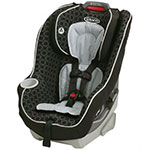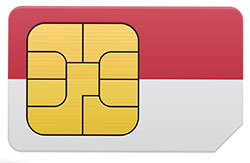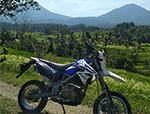About Balinese Name
20 May 2008Can you imagine a community of three million people, men and women, only adopting four available names, Jack, Jill, John, or Jean as their first name? Easy to remember maybe, but would not it be very confusing? It happens in Bali. How often have you experienced this: You can not differentiate one Balinese person by name from another because they bear the same moniker. Your tour guide might be called Wayan, Made, Nyoman, or Ketut, but then so might your driver, a waitress at a restaurant you are eating in, the hotel clerk, the receptionist, the room boy, and even the general manager. Male or female. This might lead to believing that there are only four names for all three million Balinese.
Is it really that simple? Absolutely not! Although the Balinese have first and second names, they don't adopt family names. There may be only four first names (beyond their aliases, which are four in total), but parents are free to create the second names. It sounds simple but it's easily confusing, isn't it? Balinese names are not dictated from such a Bible, as everyone is free to create names. While traditional names limit the terms, modern society often combines Balinese, Sanskrit, Indonesian and Western names. Combined with the hereditary titles, someone's name often consists of five to seven lexis.
Unfortunately there is no such a rule as in Western culture where one calls someone they know or a friend of their same or lower age by their first name and addresses their seniors by Mr. or Mrs. and their last name. In Bali one can be called by their first, second, third, fourth or even fifth name, or a combination of them. Naturally, one is called by a different name according to an agreement among the group. For example, a boy with a long name such as Anak Agung Bagus Putu Rai Antara Sudirta may be called Agung by his classmates, Bagus by his playmate and Putu by his college mates. Or Rai, Antara, Sudirta, or a combination of them such as Gung Rai, Gus Rai, Rai Antara, and Gus Antara. Mathematically, the list goes on.
To understand the Balinese naming system we have to first understand their "caste" structure. Although similar, this is not the rigid caste system that exists in India, but rather an informal constitution bearing four different social structures. Developed during the medieval era when there were only four distinct groups in society, i.e. the priests were brahmana, the rulers ksatria, army members (and often tradesmen and smith) Wesya and the rest (which consist of mostly farmers and workers) sudra, the Balinese caste system today simply remains symbolic.
The first three groups carry "title names" in front of their first name. Ida Bagus or Ida Ayu for the Brahmana priest community, Anak Agung or Cokorda for the Ksatria ruling family, and Dewa, Desak, or Gusti for Wesya army members. Such titles later became so inseparable that they appeared in formal papers when the modem world began to introduce birth certificates and ID cards. However, those three groups account for less than 10 percent of the Balinese. The rest are those with only four choices for their first name.
Indeed the modern world that offers multiple choices of job positions, from governmental offices, hotels, restaurants, tour agents, Bali driver, and retail outlets prevent the caste system from being rigidly applied. The caste system is virtually over yet the names stick. Members of priestly brahmana hereditary, those with title Ida Bagus (M) or Ida Ayu (F), are currently also working as tour guides, hotel staff, and teachers - only a few of them follow their ancestor occupations.

Like the English royal term Her/His Majesty, The Exellency, The Great and Lord, the Balinese adopt such titles for their formal names. By these titles, Balinese are the great (Anak Agung), the almighty (Cokorda), the omnipotent, the gods (Dewa, Gusti), the bold, handsome (Ida Bagus), and the beautiful (Ida Ayu). Modern Balinese parents tend to add few "Christian names" before their Balinese name, specially those in contact with foreign visitor, such as John, Michael, Eric, Thomas, Jimmy, etc.
But there are also popular names that sound like English names but would be surprising to an English-speaking community: Dicky (M), Fanny (F), Risky (MIF), Fishi (F) Windy (ElM) Rainy (F) are good examples. And one of our best friends is even named Dogy.
Normally, Balinese have a maximum of three children in a family. Wayan (or Putu) for the first child, Made (sometimes Nengah which means the middle) and Nyoman (or Komang) respectively. (Indeed three is the perfect figure in the
Hindu teachings as they pray to three God representatives, Brahma, Wisnu, and Siwa, and they believe in the Tri Hita
Karana, the concept of three relationships in maintaining peace and harmony. More or less similar to the Catholic's
Father, Son, and Holy Ghost).
The fourth child earns the name Ketut, virtually meaning the unplanned or unwanted. Nevertheless, some Balinese families have more than four children. In this case, from the fifth kin on, they would simply repeat the order from the beginning, Wayan, Made, Nyoman and Ketut. When this happens, the children are also given the additional name Ceni, meaning smaller or younger. So when you hear people calling someone Yan Nik (from Wayan Cenik, fifth kid) or De Nik (from Made Cenik), sixth kin) you will know why.
With the success of the national family planning program, which limits families to a maximum of two kids, the third and fourth names, Nyoman and Ketut, have more become a more "rare species". This is the case with the current families.
Winner or Losers!
If an upper caste girl for example an Anak Agung, is married to a Balinese commoner or a non-Balinese man, she maintains her royalty name, but won't bear sons or daughters with an Anak Agung name (therefore they have lost their upper caste status). Conversely, if a Balinese man of royalty is married to a commoner or even a visitor, their sons or daughters will automatically be given a royal name and upper caste status.





















